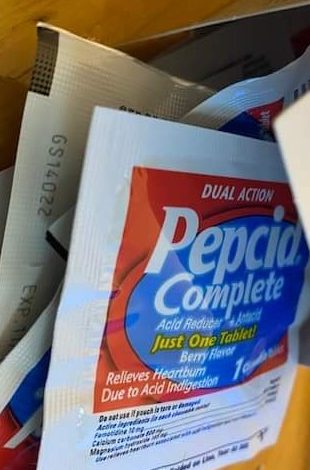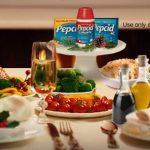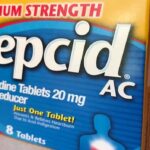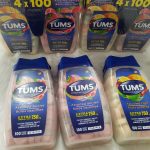Can I Take 2 Pepcid Complete At Once?

Heartburn refers to a burning sensation in your chest and throat. It may be triggered by the foods you eat, particularly spicy, fatty, or acidic foods. In some cases, heartburn can be a symptom of gastroesophageal reflux disease (GERD). This long-term condition has many potential causes.
In fact, up to 28% of adults in North America experience gastroesophageal reflux disease (GERD), a common condition that causes heartburn. GERD occurs when acid is pushed up from the stomach back into the esophagus, which leads to the heartburn sensation.
Heartburn is uncomfortable, but you can find effective relief with home remedies, lifestyle changes, and over-the-counter (OTC) medications. There are many medications to treat acid reflux and heartburn, but in this article, we shall be focusing on the proper use of Pepcid Complete.
What is Pepcid Complete?
Pepcid Complete is a medication that relieves heartburn associated with acid indigestion and sour stomach. It combines an H2 blocker with an antacid that starts neutralizing acid in your stomach in seconds. It contains famotidine 10 mg, calcium carbonate 800 mg, and magnesium hydroxide 165 mg.
Do not use
• if you have trouble or pain swallowing food, vomiting with blood, or bloody or black stools. These may be signs of a serious condition. See your doctor.
• with other acid reducers
Ask a doctor before use if you have
• had heartburn for over 3 months. This may be a sign of a more serious condition.
• heartburn with lightheadedness, sweating, or dizziness
• chest pain or shoulder pain with shortness of breath; sweating; pain spreading to arms, neck, or shoulders; or lightheadedness
• frequent chest pain
• frequent wheezing, particularly with heartburn
• unexplained weight loss
• nausea or vomiting
• stomach pain
• kidney disease
Ask a doctor or pharmacist before use if you are taking a prescription drug. Antacids and acid reducers may interact with certain prescription drugs.
How is Pepcid Complete taken?
Adults and children 12 years and over: the recommended dose to relieve symptoms is 1 tablet chewed before swallowing
• do not swallow the tablet whole: chew completely
Children under 12 years: ask a doctor
When the drug starts working you should have less pain and your symptoms should improve. If you stop taking the drug suddenly or don’t take it at all: Your acid reflux, heartburn, or ulcer symptoms may not get better or may get worse.
Can I Take 2 Pepcid Complete At Once?
No, taking 2 Pepcid Complete at once can result in an overdose. In addition, you should not use more than 2 chewable tablets in 24 hour period if not you could have dangerous levels of the drug in your body.
If you don’t take this drug as directed, it may not work as well or may stop working completely. If you miss your dose, take it as soon as you remember. But if you remember just a few hours before your next scheduled dose, take only one dose. Never try to catch up by taking two doses at once. This could result in dangerous side effects.
Symptoms of an overdose of this drug can include:
• agitation
• confusion
• seizures
• severe muscle pain
If you think you’ve taken too much of Pepcid Complete, call your doctor or local poison control center. If your symptoms are severe, call 911 or go to the nearest emergency room right away.
Tips for managing Heartburn
According to Harvard Health, you can incorporate the following tips for managing heartburn in addition to taking Pepcid Complete:
- Avoid certain foods: People with acid reflux were once instructed to eliminate all but the blandest foods from their diets. But that’s no longer the case. But there are still some foods that are more likely than others to trigger reflux, including mint, fatty foods, spicy foods, tomatoes, onions, garlic, coffee, tea, chocolate, and alcohol. If you eat any of these foods regularly, you might try eliminating them to see if doing so controls your reflux, and then try adding them back one by one.
- Don’t drink carbonated beverages: They make you burp, which sends acid into the esophagus. Drink flat water instead of sparkling water.
- Don’t move too fast: Avoid vigorous exercise for a couple of hours after eating. An after-dinner stroll is fine, but a more strenuous workout, especially if it involves bending over, can send acid into your esophagus.
- Eat sparingly and slowly: When the stomach is very full, there can be more reflux into the esophagus. If it fits into your schedule, you may want to try what is sometimes called “grazing”—eating small meals more frequently rather than three large meals daily.
- If you smoke, quit: Nicotine may relax the lower esophageal sphincter.
- Sleep on an incline: Ideally, your head should be 6 to 8 inches higher than your feet. You can achieve this by using “extra-tall” bed risers on the legs supporting the head of your bed. If your sleeping partner objects to this change, try using a foam wedge support for your upper body. Don’t try to create a wedge by stacking pillows. They won’t provide the uniform support you need.
- Stay up after eating: When you’re standing, or even sitting, gravity alone helps keeps acid in the stomach, where it belongs. Finish eating three hours before you go to bed. This means no naps after lunch, and no late suppers or midnight snacks.





